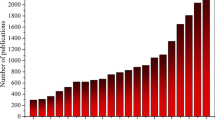Abstract
The use of monolithic refractories has spread throughout various industries over the past few decades. Today it is common practice to install monolithics in heavy wear areas. In the past, only refractory bricks were used. Unlike bricks, unshaped products require sintering during operational use to obtain their final properties. Applications outside the iron and steel industry are often referred to as “industrial applications”. Industrial applications also demand improved castable properties such as better chemical stability, mechanical strength and abrasion resistance in intermediate temperature ranges. The service temperatures in industrial applications are often below 1200°C, so castables do not attain sufficient energy for strong sintering reactions. Matrix properties are important for refractory castables. They determine not only workability and strength, but also performance within an application. By optimising the overall particle size distribution of fine and superfine materials including the binder, better workability can be achieved. In addition, the physical properties of castables can be improved, especially in intermediate temperature ranges. Calcined and reactive aluminas and dispersing additives can also contribute significantly to the improvement of matrix performance with respect to water demand, setting control and strength development.
Similar content being viewed by others
References
Amthauer, K., et al.: New European sinter aggregate with 96% Al2O3. 54. Internat. Colloquium on Refractories, Aachen, Germany (2011)
Laurich, J.O., Buhr, A.: Synthetic Alumina Raw Materials — Key Elements for Refractory Innovations. Unitecr’99 Congress, Berlin, Germany, Proc. (1999) 348–355
Liu, X. et al.: Upgrading Castable Performance through Matrix Optimization. Austceram, Perth, Australia (2002)
Büchel, G., et al.: E-SY 1000 and E-SY 2000 — new reactive aluminas for easy workability of castables, Iv. Internat. Scientific Conference Refractories, April 24–26, 2006, Kosice, Slovakia
Kockegey-Lorenz, R. et al.: E-SY Aluminas for Easy to Use High Performance Castables, 53. Internat. Colloquium on Refractories, Aachen, Germany, (2009) (86-88)
Van Garsel, D. et al.: New Developments of the Improved Durability of Alumina Based Castables, IRE Colloquium, Johannesburg, South Africa, July, 1997
Krebs, R.: Innovationen bei verflüssigten Feuerbetonen, Refractory and chimney congress 2003 of GARC (German Association of Refractories and Chimneys); Düsseldorf/Germany, June 16, 2003
Author information
Authors and Affiliations
Corresponding author
Rights and permissions
About this article
Cite this article
Schnabel, M., Buhr, A., Kockegey-Lorenz, R. et al. Benefit of Matrix Alumina and Modern Dispersing Systems in Low Cement Castables. Interceram. - Int. Ceram. Rev. 63, 281–285 (2014). https://doi.org/10.1007/BF03401071
Received:
Published:
Issue Date:
DOI: https://doi.org/10.1007/BF03401071




